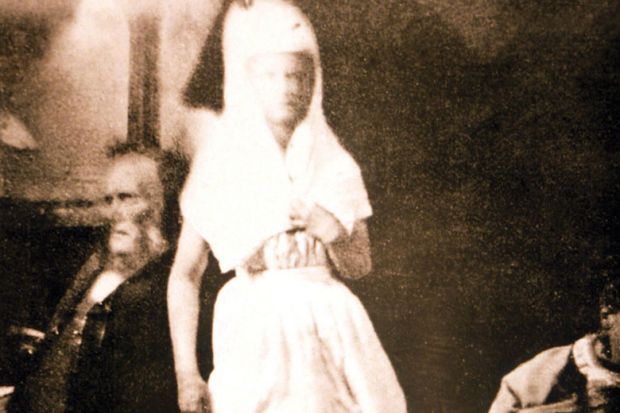In the closing years of the 19th century, the Society for Psychical Research (SPR) undertook pioneering research on “psy” powers; ran a massive “Census of Hallucinations”; and investigated the mysteries of the seance room. There have long been organisations concerned with the unknowable, including the Ghost Club, the Fairy Investigation Society and the Parapsychology Foundation. What was remarkable about the SPR, at least in that first generation, was the calibre of the individuals it attracted: Frederick Myers, Andrew Lang, Henry Sidgwick, Oliver Lodge, William James…These are among the intellectual stars of their era: a ladle full of cream skimmed off one of the most brilliant generations of British scholars.
Courtenay Raia has, there is no question, chosen a fascinating area of research. The SPR, founded in 1882, is both neglected and significant. What is perhaps surprising is the way that she has chosen to go about her study. The natural way to write a history of the SPR would surely be to ransack the relevant archives in Cambridge and London, and then narrate and analyse, in institutional terms, those heady years in the 1880s and 1890s when so many talents united to investigate the “supernormal” in empirical terms.
Yet Raia has chosen a different strategy. She has taken four figures associated with the SPR – William Crookes, Myers, Lodge and Lang – and created a series of linked biographies. These combine elements of the subjects’ own published writing with more intimate accounts of their lives: much is made in the chapters dedicated to Myers, for instance, of a childhood credo, a dead mole and a jump from a large waterfall. The result is a palimpsest, for each of these men, of the public and private, one that offers valuable insights into fin de siècle Britain and the new spirituality that tormented, in different ways, all of these individuals.
In all this, however, the SPR is the elephant that is not in the room. There are constant references but little of substance, whereas the “Prometheans” who sponsored and inspired the SPR are picked over in mesmerising detail. Only in the fourth chapter, which hangs together a little raggedly, do we have the SPR centre stage, and there its beginnings are folded into the experiences of Myers. The SPR becomes the very fine string on which a series of Victorian personalities have been threaded: it is an ordering principle, but not Raia’s focus, and sometimes disappears from sight altogether.
Does this approach work? In elucidating the history of the SPR, not particularly well. But in recreating the ambition of a number of British thinkers in the late 1800s as they step knowingly into the shadows, it is unrivalled. On finishing the book, you take away a sense not just of the brilliance of men such as Myers, but also of their courage in defying the expectations and small-mindedness of their contemporaries. The story continues, of course. In a final chapter, Raia looks at the failures of psychical research in the past century (in terms of mainstream science) and the failure of science to allow for even a minority opinion on the “impossible”. The fairy fires glimmer on the peaks, but no one has yet brought fire down from the mountain.
Simon Young teaches at the University of Virginia Program in Siena. His most recent book is Magical Folk: British and Irish Fairies – 500 AD to the Present, co-edited with Ceri Houlbrook (2018).
The New Prometheans: Faith, Science and the Supernatural Mind in the Victorian Fin de Siècle
By Courtenay Raia
University of Chicago Press, 448pp, £27.00
ISBN 9780226635354
Published 4 December 2019




